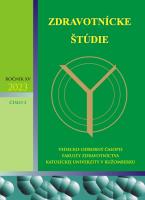Klinická prezentácia tuberkulózy na intenzívnej jednotke
Clinical Presentation of Tuberculosis in the Intensive Care Unit
Author(s): Tomáš Turoček, Eva Rozborilova, Peter ŠterbákSubject(s): Health and medicine and law
Published by: VERBUM - vydavateľstvo Katolíckej univerzity v Ružomberku
Keywords: Tuberculosis; Respiratory failure; Intensive care unit; Hemoptysis; Miliary tuberculosis; Hypoalbuminemia
Summary/Abstract: Tuberculosis is a curable communicable infectious disease in majority caused by bacillus Mycobacterium tuberculosis. Tuberculosis patients requiring acute intensive care make up about 1-3% of all tuberculosis patients. Targeted therapy is often delayed due to the atypical progression of the tuberculosis disease and its forms. Patients with respiratory failure due to advanced destruction of the lung parenchyma in pulmonary tuberculosis are among the most common reasons for admission to the intensive care unit. Massive hemoptysis as a symptom of advanced chronic tuberculosis is a severe condition with a risk of suffocating the patient. Neurological symptoms in miliary tuberculosis are a common sign of advanced disease, leading the patient to the intensive care department. Tuberculosis patients, regardless of age, often present with serious hypoalbuminemia, which is a significant predictor of mortality and morbidity.
Journal: Zdravotnícke štúdie
- Issue Year: XV/2023
- Issue No: 2
- Page Range: 3-7
- Page Count: 5
- Language: Slovak

